21 Unbelievable Facts About Svalbard: Northernmost Settlement in the World
Ever wonder what life is like in the northernmost settlement in the world? If you ever decide to visit Svalbard, you may be in for a few surprises. I went to the main town of Longyearbyen on Svalbard to learn more about this remote place, and discover some facts about Svalbard.
It turns out there are some surprising daily realities to adjust to when you live in an Arctic settlement among 3,000 polar bears at 78º N latitude. Here are just a few unexpected, cool, and strange facts about life on Svalbard, the northernmost permanent settlement in the world.
Disclaimer: Lose the Map contains affiliate links and is a member of Amazon Services LLC Associates Program. If you make a purchase through an affiliate link, I receive a small commission at no extra cost to you.
Don’t have time to read now? Pin and save for later!
Disclaimer: My visit to Svalbard was covered and partly comped by Mary Ann’s Polarrigg and Spitsbergen Adventures; however, all opinions and viewpoints expressed in this post are, as always, my own. This post does contain some affiliate links, for which I will earn a small commission at no cost to you.
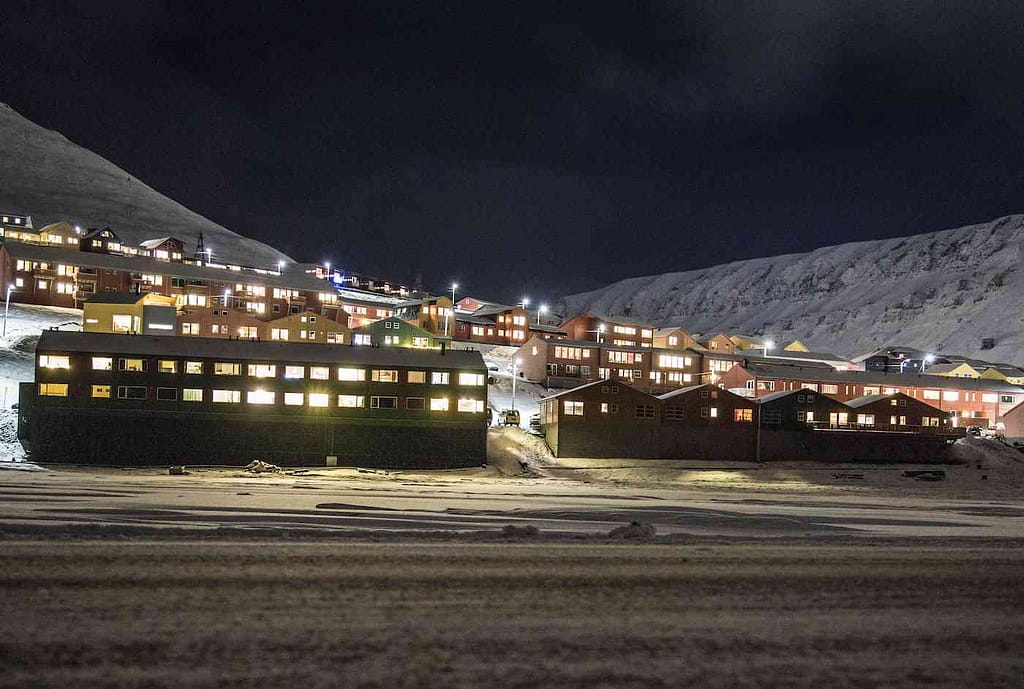
Where is Svalbard Located?
Svalbard is located northwest of Mainland Norway, with the capital city of Svalbard, Longyearbyen, at 78 degrees latitude (north). The archipelago of Svalbard includes several islands, but all settlements are on the main – and by far the largest – island of Spitsbergen.
Is Svalbard a Country?
Svalbard’s status is a little fuzzy, because while it is technically part of Norway, it is a visa-free zone (as you’ll see in this post). It is also not part of the Schengen agreement, and Norway cannot use Svalbard for any military bases or actions. So while it is under Norway’s jurisdiction, and definitely not its own country, it enjoys a special, somewhat independent status within the country.
The Craziest Facts About Svalbard
You Cannot Be Born or Buried in Svalbard
Yes, you read that right. Because the ground in Svalbard is permafrost, bodies don’t decompose, so the local cemetery stopped accepting bodies nearly a century ago – smartly avoiding any future zombie apocalypses.
The rules about birth are mostly for the safety of the mother and baby, as the local hospital is not equipped to handle all possible medical problems associated with childbirth. So if you are a woman in the late stages of pregnancy or an older resident, you are encouraged to head back to mainland Norway (or elsewhere). This creates an environment in which…
The Average Age of the Population of Svalbard is 33
The population of Svalbard is quite young, which is why when you visit Svalbard you won’t see many retirement homes, but you will see two kindergartens in the relatively small town of Longyearbyen. Comparatively, the average age of Norway’s population is 39, and the average age of the US population is around 38. An inhospitable climate, coupled with very basic medical services, make living on Svalbard well past retirement age more difficult than on the mainland.
Longyearbyen Was Founded Because of Coal Mining
Though Longyearbyen was founded as a coal mining community on Svalbard, there is only one mine still in operation, and most experts believe the mine will only be operational for ten more years before resources run out. Many residents now work in tourism and Arctic research.
Svalbard is a Visa-Free Zone
That’s right – anyone from any country in the world can live and work on Svalbard without securing additional papers or citizenship. However, the Governor of Svalbard may reject you if you don’t have a source of income, so residents must still secure a job. Long-term residents from the 46 countries under the Svalbard Treaty are granted the same rights as Norwegian nationals, though residents of other nations can live and work on Svalbard indefinitely as well.
There are Over 40 Nationalities in Svalbard
My photography tour guide, Erica, told me about her move from Italy. I met a couple of immigrants from Iran, as well as one from Russia.
After a few people visit Svalbard, some apparently decide to stay – victims of the oft-cited-by-locals “Svalbard Fever”. In this small group of 2,600 people, there are (shockingly) over 40 nationalities represented in the population of Svalbard. The largest ethnic groups on the island include Norwegians and Russians, but there are also some populations you would never expect to find in the Arctic.
There is a Large Thai Population on Svalbard
When I first searched for restaurants near me in Longyearbyen, I was surprised to find a highly-rated Thai restaurant pop up first (of the three total results that Yelp has indexed in the area). It turns out there is a comparatively large Thai population on the island, all thanks to one woman: Sompong Haug.
When she met her Norwegian husband and moved to Svalbard in the 80s, she was the first permanent Thai resident in the population of Svalbard. However, after she moved, family members, distant cousins, friends, and acquaintances followed in her footsteps (guess she was quite popular), setting up a nice little community on the island.
Snowmobiles Are a Major Method of Transportation
Though roads exist within the major settlements of Longyearbyen, Barentsburg (the Russian settlement), and Ny-Alesund, there are no major roads connecting one town to another. Which means for a good part of the year, snowmobiles aren’t used just for fun excursions, but are actually necessary for transportation and commuting.
Some locals estimate that though there are only 2,600 residents on the islands, there are as many as 4,000 snowmobiles. Snowmobiles are usually operated between February and May when the snow cover is thick enough to protect the underlying flora from damage. In the warmer months, the towns can be reached by boat – important transportation facts to know before you visit Svalbard.
Reindeer Wander Around the Town of Longyearbyen
When you visit Svalbard, you may encounter some strange looking four-legged animals on your walks around Longyearbyen. Relax, they’re just reindeer, but a particular species unique to Svalbard. They look marked different from reindeer in mainland Norway. Try not to sneak up on them and scare them, as our tour guide told us their hearts literally can’t handle that kind of pressure.
If You Leave Longyearbyen, You Must Legally Carry a Gun
According to local law, when you leave the town limits you must legally carry a gun suitable for killing polar bears and be trained in how to use it (or leave town with a guide that can do those things – not all tourists who visit Svalbard need become expert marksmen).
Since there are 2,600 people and 3,000 polar bears on the island, this is a practical self-defense policy in case a polar bear gets aggravated or is starving and decides to attack. However, many polar bear-human interactions on the island are quite peaceful – in the last 35 years, only three people have been killed by polar bears. Either way, you’re probably better off with a guided tour.
Polar Bear Shootings Get the Full CSI Treatment
On the flip side of the above rule, if you do end up having to kill a polar bear, that killing will get fully investigated by forensic experts to make sure it was truly in self-defense. Since polar bears (and most flora and fauna on Svalbard) are a protected species, experts have to determine that the kill was necessary, otherwise, you get a fine or even prison time.
When You Visit Svalbard, Take Shoes Off and Leave Guns Outside
Most local stores and restaurants have signs urging visitors to take off shoes and barring guns indoors. Otherwise, every single place in Longyearbyen would have a few feet of snow dragged in over time.
Reflective Vests Are Mandatory in Longyearbyen
Pedestrians are encouraged/mandated to wear reflective vests in town, especially during the polar night on Svalbard. As there are no real sidewalks, you must share the road with cars in pitch black, snowy conditions.
Polar Night and the Midnight Sun Each Last Four Months
The number one question I got about my trip to Svalbard was, “so, it was really night? Like, the whole time?”. Yep. Unlike in Tromsø, where during the “day” you could count on four hours of twilight-like conditions, Longyearbyen was pitch black from the moment I arrived until the moment I left three days later.
Here are the daylight conditions (or lack of) you can expect when you visit Svalbard: from mid-November to mid-February, the sun never appears above the horizon in Svalbard. After that, daylight creeps in for a few minutes the first day and accelerates rapidly until the midnight sun phenomenon starts in late April, and the sun never dips below the horizon again until late August.
Svalbard is Home to a Ghost Town – Pyramiden
Accessible from Longyearbyen via snowmobile, Pyramiden is a Russian abandoned mining town, deserted after the closure of the last mine. Since Pyramiden was shut down fairly recently, in 1998, most of the buildings and infrastructure are still intact (no doubt literally frozen in place).
Almost All of Longyearbyen was Bombed During WWII
I know what you’re thinking: for what conceivable purpose would even Hitler bomb out this tiny Arctic settlement two hours away by plane from the northernmost tip of mainland Europe? Well, before modern satellite data made predicting weather patterns much easier, observations from the Arctic were the best way to observe incoming weather fronts, which gave the army that possessed such information a huge strategic advantage.
Only one building remains intact from before the WWII bombing of Longyearbyen – a small former post office overlooking the town (pictured above).
There Are Great Fine Dining Options on Svalbard
“Gourmet” may not be the first word that pops to mind when you think of a coal mining community in the Arctic, but when you visit Svalbard, Longyearbyen may surprise you in this regard. It is home to great fine dining experiences like Gruvelageret and Huset, the latter of which has a selection of over 20,000 bottles of wine. And speaking of alcohol…
Visit Svalbard For One of the Largest Whiskey Collections in Europe
When you visit Svalbard, you must visit Karslberger Pub, home to one of the largest whiskey collections in Europe (as well as enormous selections of rum and cognac). There are some bottles so expensive that a manager must be called down to pour them if they are ordered.
No pressure on that person. They just know if their hand slips, they just lost $1,000.
Svalbard is a Tax-Free Zone (But Outside the Schengen Zone)
Every Norwegian in Tromsø had the same reaction when I said I was going to Svalbard: “go stock up on alcohol, it’s so much cheaper there”. Since Svalbard is a tax-free zone, alcohol is sold at much cheaper prices than on the highly-taxed mainland, but it can only be bought from one store – Nordpolet – and you must show your boarding pass to purchase.
Also, though Svalbard is technically ruled by Norway, and has a governor appointed by the country, they still hold a special status that keeps them tax-free and visa-free, as well as outside the Schengen Zone.
Longyearbyen Has a Designated Mailbox for Santa Claus
Sorry to disappoint you, but it’s not a real lifeline to Santa – and if you’re old enough to be procrastinating at work by reading this blog, and still truly believe in Santa, we need to have a chat. But for the rest of us, Longyearbyen has a cute little attraction almost at the edge of town, a mailbox in which children can drop off their letters and gift requests to Santa.
Although I would imagine children on Svalbard stop believing in Santa at an earlier age than most since they figure that if he existed, they would have seen him by now.
Svalbard Is Home to a ‘Doomsday’ Vault – the Global Seed Vault
The Global Seed Vault is a must-see sight when you visit Svalbard. This doomsday vault is meant to protect species of important agricultural seeds from almost every country in the world, in the case of widespread disaster. Almost a million packets of seeds are currently stored there, and much more can still be deposited.
After destructive wars or natural disasters, countries can claim their seeds to restart their agricultural activities. Syria is the first country to lay claim to their deposits. But if our world continues on its current trajectory, we’ll all probably be following suit soon.
Global Warming is Actually Causing a Huge Problem
You would think that if there was one area in the world global warming may be good for, it would be the Arctic. And yet, not only is Svalbard being negatively affected by global warming, but in such an extreme climate, even minor changes in weather bring about drastic consequences. Higher than average temperatures during the wintertime are starting to melt the permafrost, which caused a huge issue in 2016 when the Global Seed Vault on Svalbard got flooded with meltwater.
In addition, the incidences of avalanches, people falling through ice, and other such calamities has increased in the past decade since warmer temperatures have destabilized the packed snow and thinned the ice cover. Seven people have died in avalanches just in the last 15 years, with the most recent avalanche in December of 2015 killing two people, injuring more, and causing millions in damage.
The day I left Svalbard happened to be the two-year anniversary of this avalanche. A storm was getting ready to hit the island as I was heading to Svalbard airport, and half the town had been evacuated to decrease the risk of death and injury in any possible avalanches. Many locals were visibly nervous, especially since the storm coincided with the exact date of the last deadly avalanche in recent memory. It was an eye-opening moment in understanding the degree to which the population of Svalbard is at the mercy of the elements, and the seriousness of global warming’s consequences.
Though I ended the post on a more serious note which I feel needs to be emphasized, I hope you got a glimpse into some surreal, quirky, and intriguing aspects of life in Longyearbyen and on the whole beautiful island of Svalbard.
Want to Visit Longyearbyen, Svalbard Yourself?
If you’re visiting Longyearbyen search and book some great Longyearbyen hotels here!
Want to stay where I stayed? Book Mary-Ann’s Polarrigg!
Book the photo tour I went on (and snowmobiling) at: Spotlight Photo Tour – Spitzbergen Adventures
Find discounted flights to Svalbard here
For dining, try Kroa and Huset
Get a nightcap (or several) at Karslberger Pub
Would you visit Svalbard? What was the most interesting fact in this post? Pin and share below!

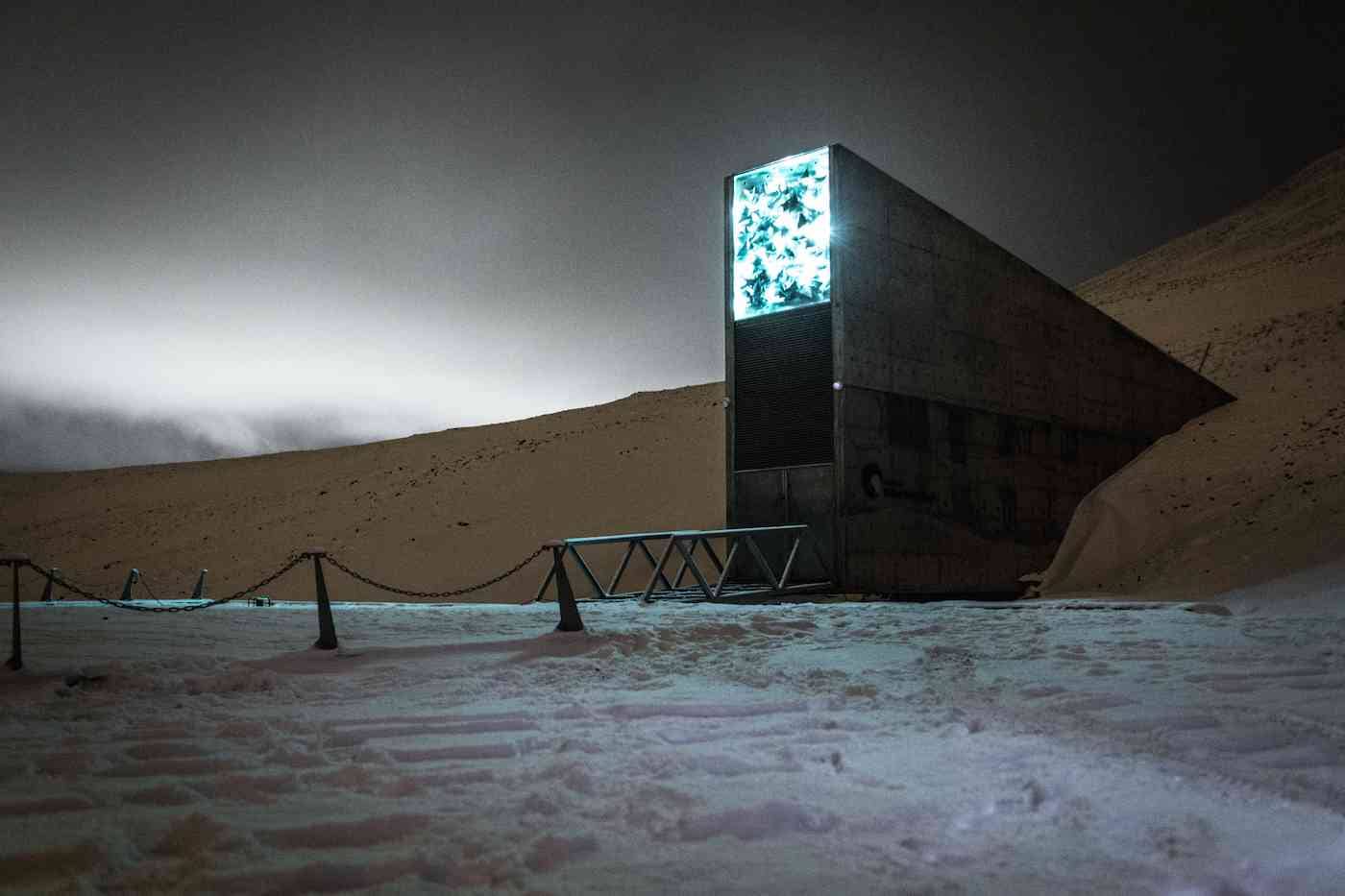
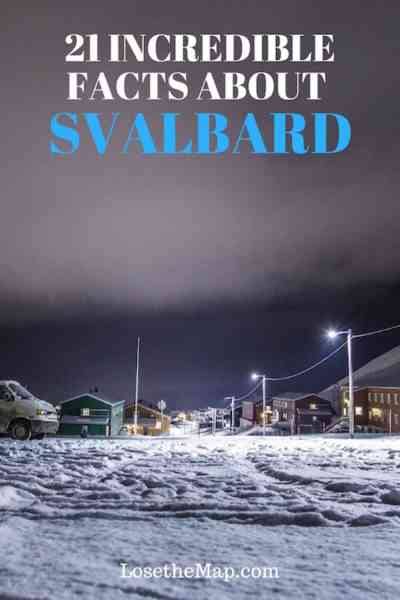
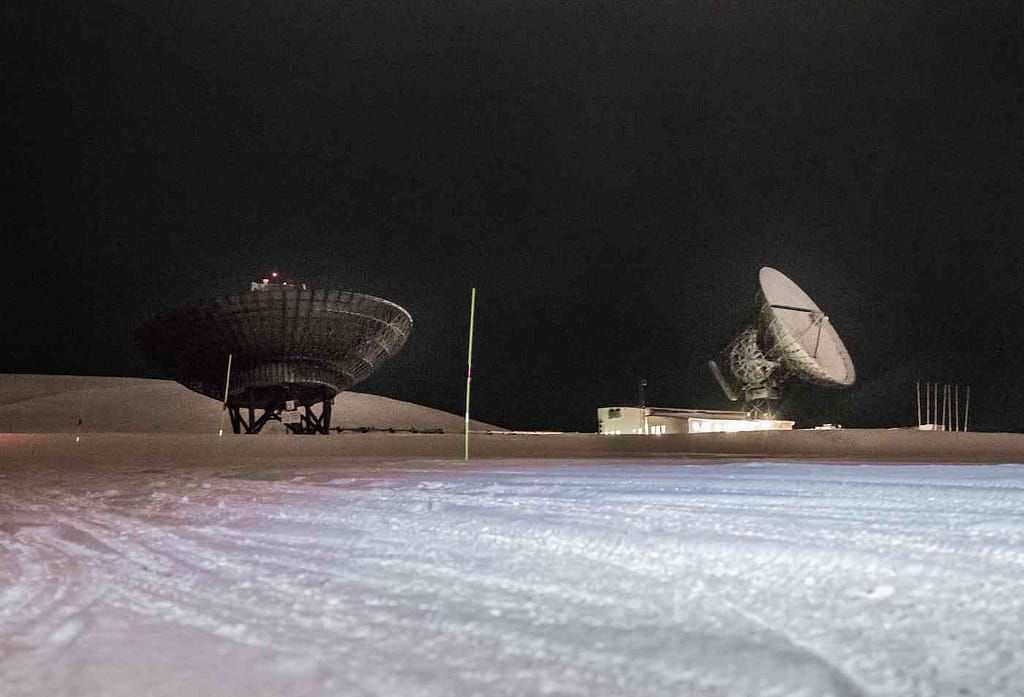
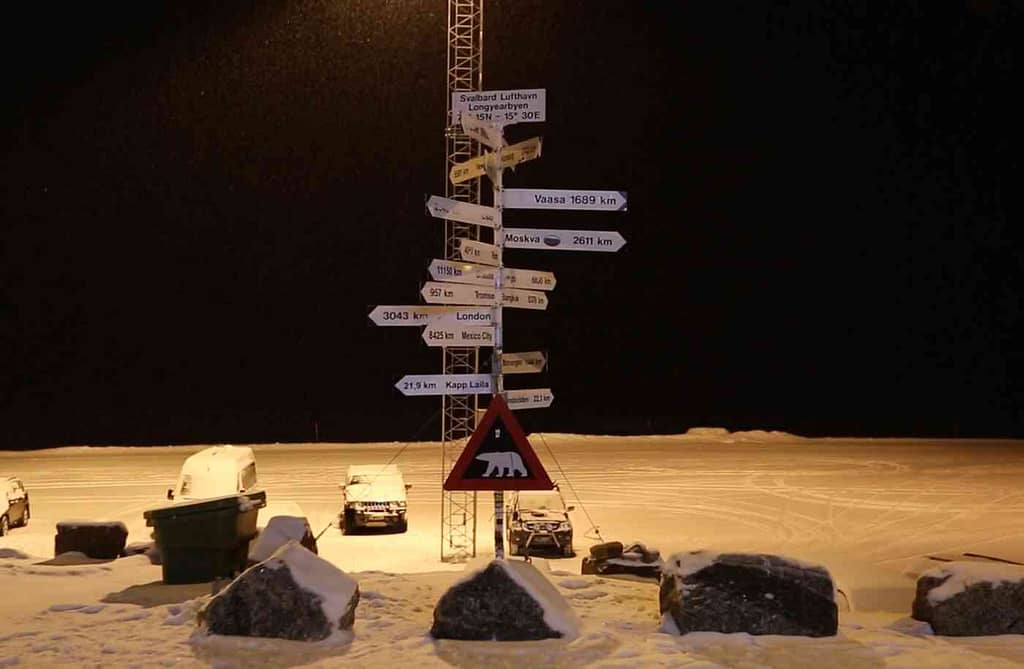
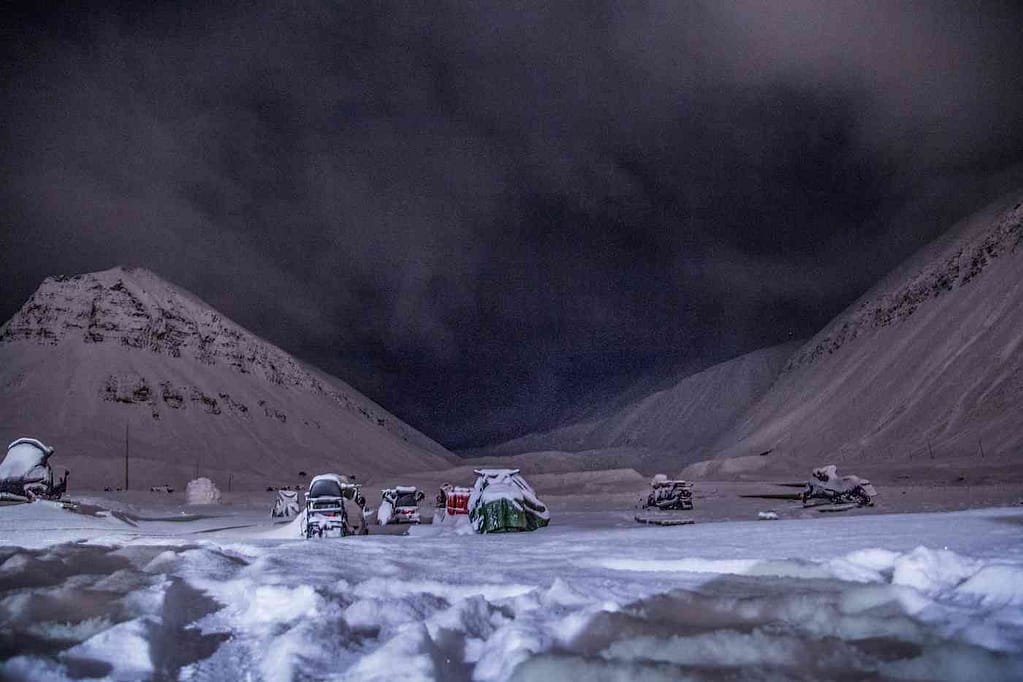
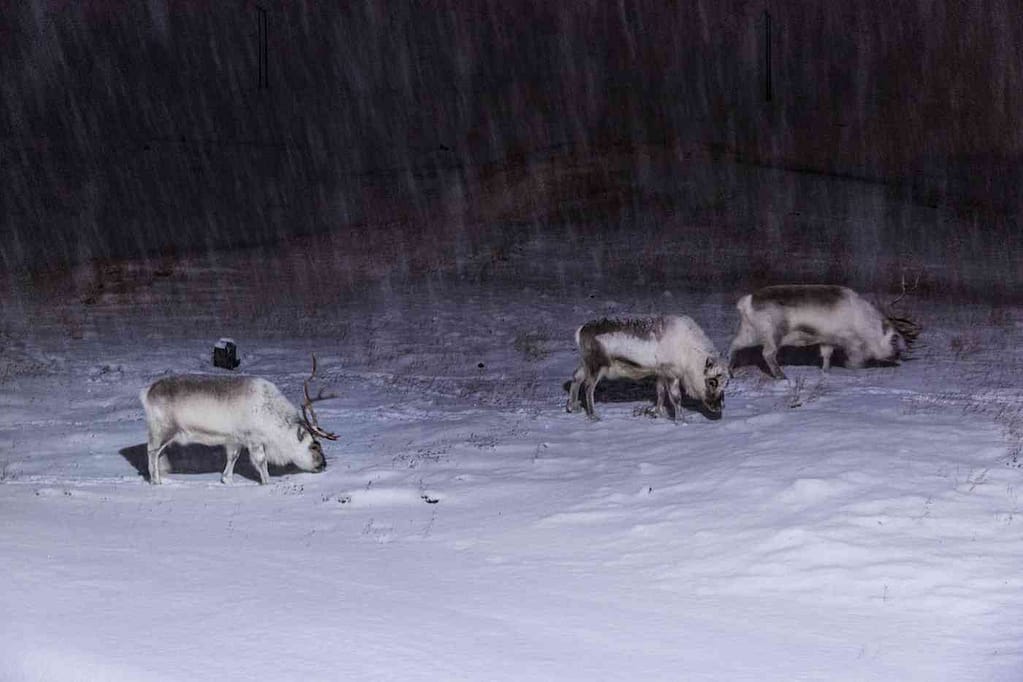
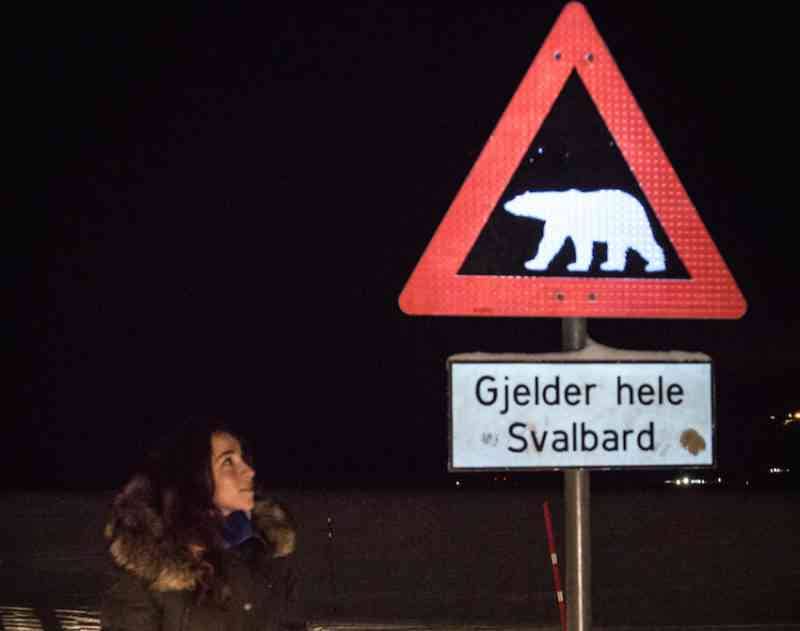
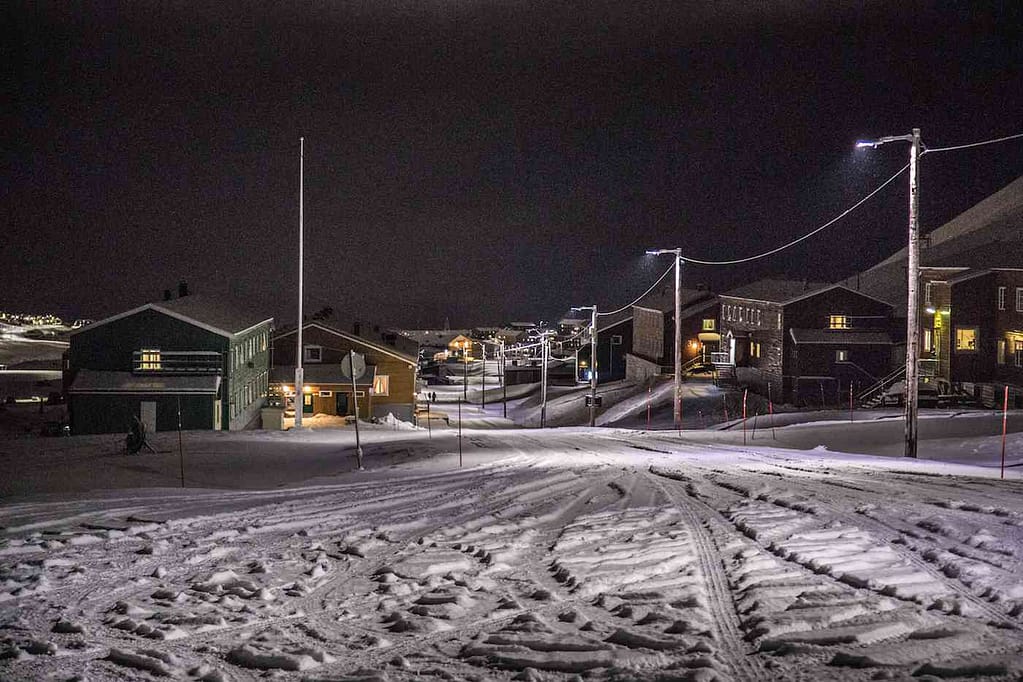
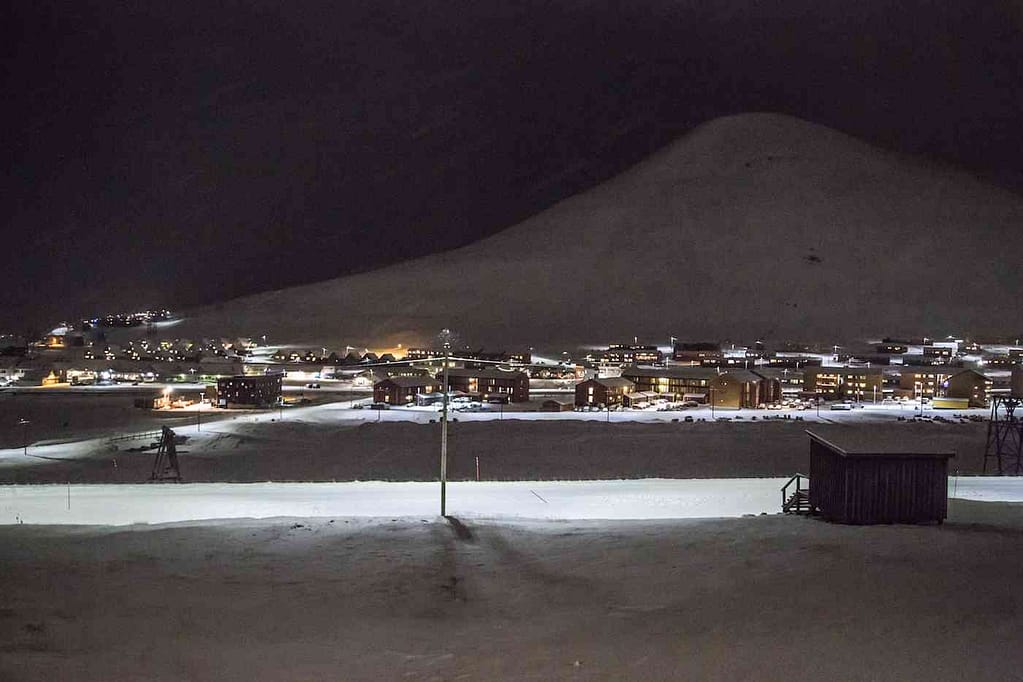
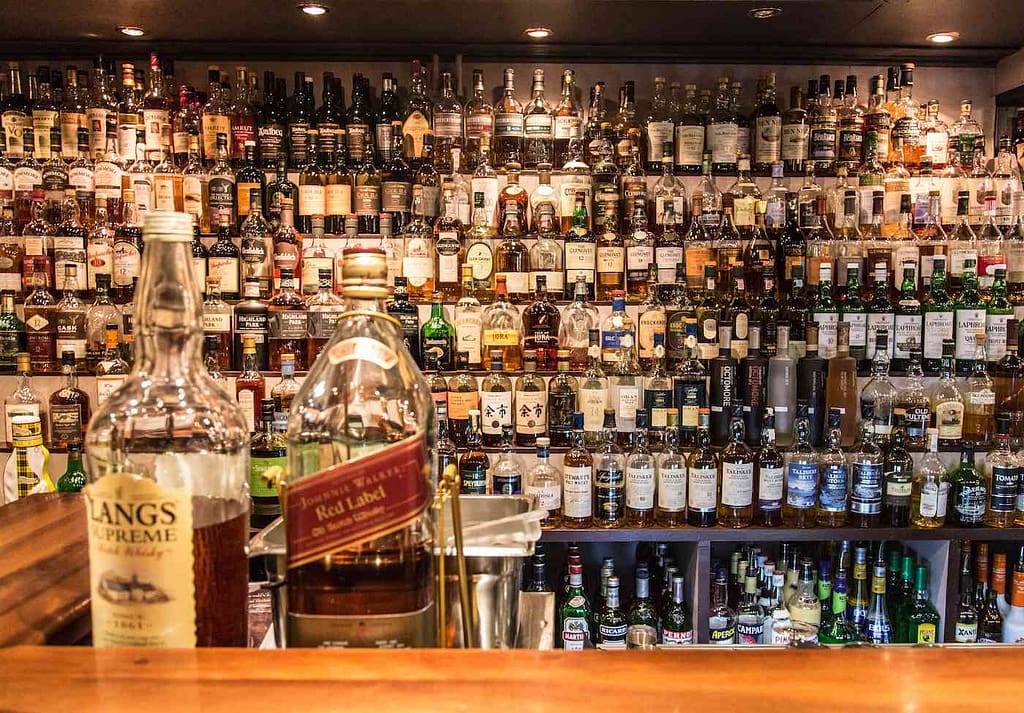

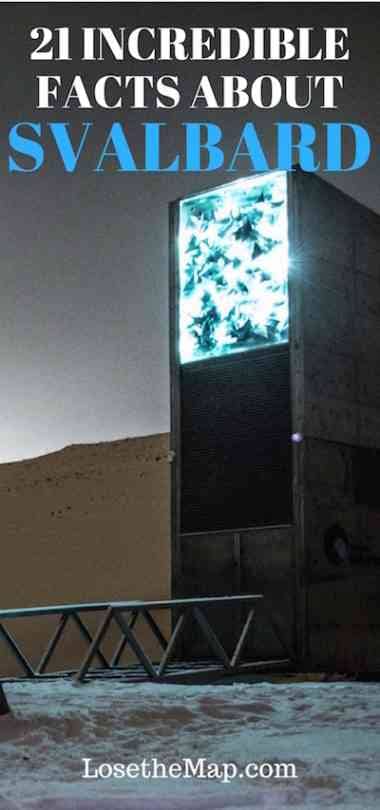
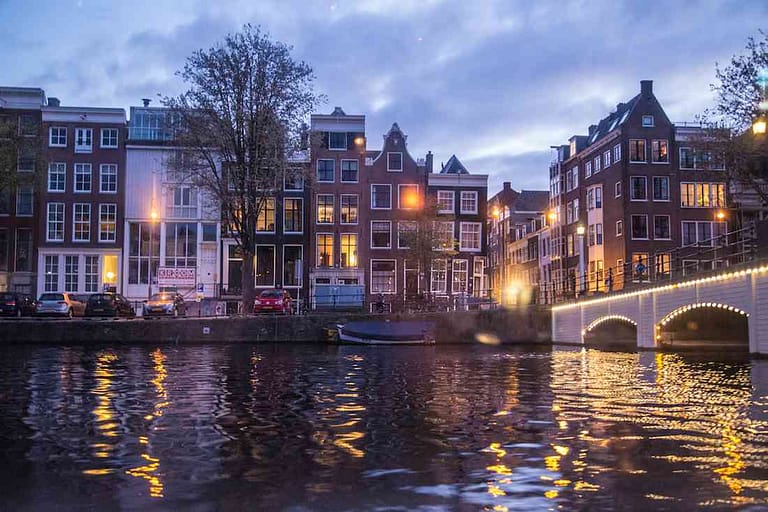
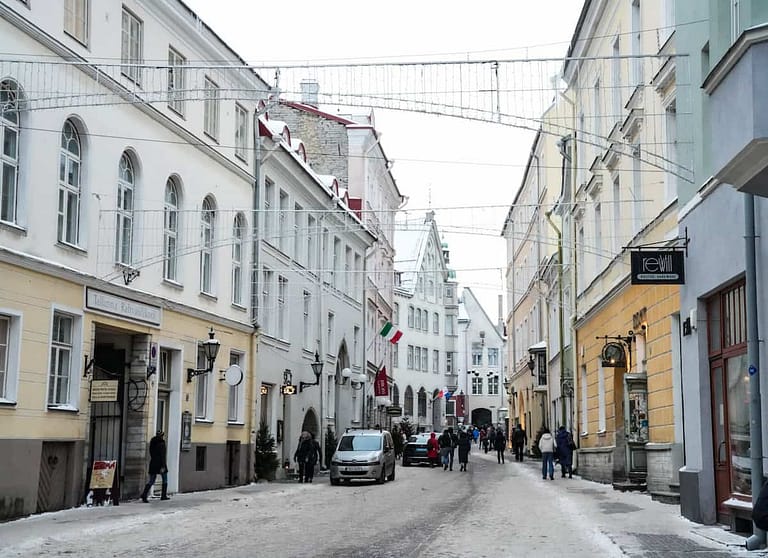

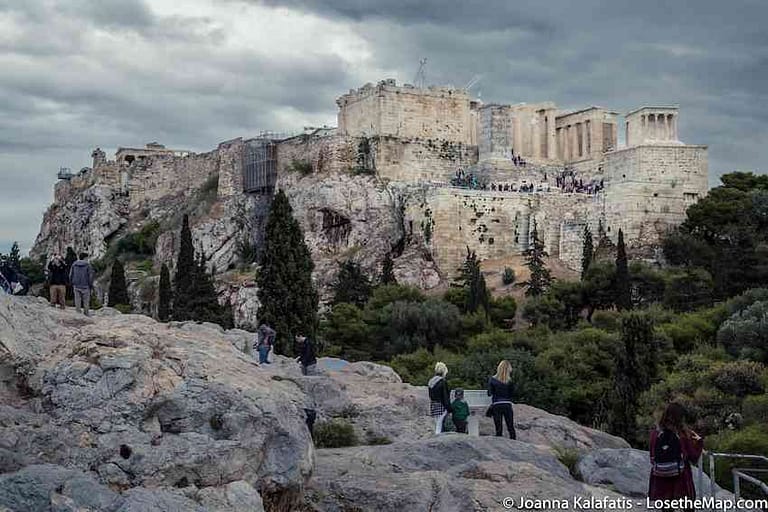
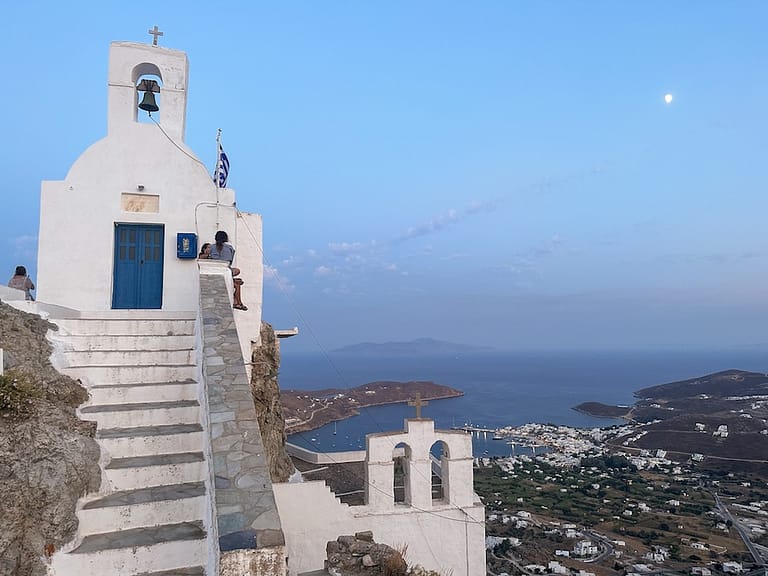
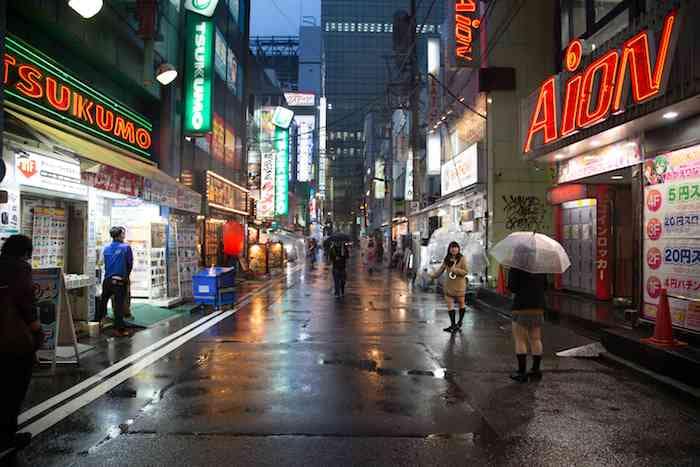
Wow, this was very interesting to read! Especially about being legally required to carry a gun and the forensic part afterwards. You did a great job summing these up, Joanna! I hope I can visit Svalbard at least once for the experience!
Glad you enjoyed it! Thanks so much :) you definitely need to visit!
I almost booked a flight to Svalbard for this summer but I didn’t because the cheap flights option was giving me too many days on the island. I have to admit that it looks fantastic and I didn’t know most of the facts about it. I do hope to visit though one day. It looks so strange being night all the time. I experienced the midnight sun before but never the 4 months night.
Definitely visit soon! You won’t regret it
Joanna, this is one of the most interesting posts I’ve read for a while, thank you. We are hoping to do a road trip up through Scandinavia in the next couple of years, so this is definitely on the ‘off the beaten track’ list for us – thank you.
Thank you so much! That sounds like it will be an incredible trip :)
Wow – I barely knew anything about Svalbard! Now I’m super intrigued to visit. I can’t get over the completed darkness though!
It was so strange but oddly beautiful! Hope you visit soon :)
This is so interesting! Did you see any polar bears there? I’ve always wanted to see them, I wonder if they organize like polar bear tours or something?
Unfortunately, I didn’t! In the winter, the polar bears rarely hang around town, they’re out on the ice shelf – but in the summer it’s easier to see some, especially if you snowmobile out of town.
I am heading out there in 2,5 weeks, superexcited for my 7 day trip! I need to find that bear sign to take a picture with :) And Seed Vault is definitely on my list, I am sooo happy I managed to get accreditation to get inside!
The bear sign is right at the town limits, you’ll get it no problem! Wow you got accreditation?! That will be an amazing experience
Wow, Svalbard is the last place on earth where I would have expected an expat community – not just Thai, but any really, other than scientists and miners! It sounds like such a cool destination to visit. I’ve been to Iceland, the Faroe Islands and Shetland, so northern islands are definitely my thing! I would just have to get over the gun thing…
Haha yes, last place I expected to find that too. Honestly, I’m very anti-gun in general, and I didn’t find it bothered me. It’s very discreet, people aren’t allowed to carry guns inside establishments, and people generally don’t walk around town with firearms. The only time you’ll notice it it when you leave town limits (with a guide), and they’ll have to have a firearm somewhere in the vehicle with them.
Oh my gosh, wow such a stunning place & you photograph it so well. wow, so many interesting facts here. Thanks for the creative post!
shakil recently posted…Best Tripods for Hiking in all budget,$100,$250$400 $500
Thank you!
Wow, this was very interesting to read! Especially about being legally required to carry a gun and the forensic part afterwards.